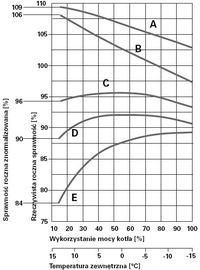Jarsey wrote: Hello, it seems to me that a bit of a lot. In my house, net 150m2, I heat up and down at 21 degrees, 5 hours at night at 19.5. The amount of gas burned is 11.5-12.5 m3. Night -19C, day -13C.
I think you need to adjust the furnace settings, controls, flows. I have been struggling with it for 3 months since I lived in my new home. 9 meters3 earlier he could burn me at day 8C, night 3C.
well, at these temperatures it burned me about 900 m3 in 2 months, so a "slight" difference :(
Jarsey wrote: I would like to add that I do not have any recuperation, etc. news. Also, let me add that this house is one big thermal bridge. At -18C frost, I borrowed a thermal imaging camera, I flew inside and out of the house. Massacre entrance door, garage door as well. I do not heat the garage, so on the camera I saw bricks between the garage and the living room. I still have some work to do.
I don't heat the garage either, the vestibule, which is at the garage level, is separated from the side of the uninhabited half of the twin only by a concrete block and this wall is freezing ... there is floor standing in the vestibule.
In the residential part, I am separated from my neighbor by a 24 cm silicate brick, so it does not pull like a concrete block, but it also does its job, because the rooms next to the other half cool down very quickly when heated, other rooms without "cold" walls keep the temperature longer.
There is nothing for me to do but wait until someone moves in next door and starts to heat up. Because at the moment, controlling the temperature in one daughter's room and keeping there 20.5 degrees in the living room in the morning, I have 16.5 degrees

((
However, I have a question ... because I searched a lot on the Internet and I can't find the parameters of my furnace regarding maximum and minimum splitting ... other data are available, but apart from these two pieces of information ..
I am asking because at the time when the water in the system was hot and the stove was only supposed to maintain its temperature (the return water was about 5 degrees lower), the stove burned 1.2 m3 per hour for me .. I wonder if this is the norm :)
greetings
Michael



